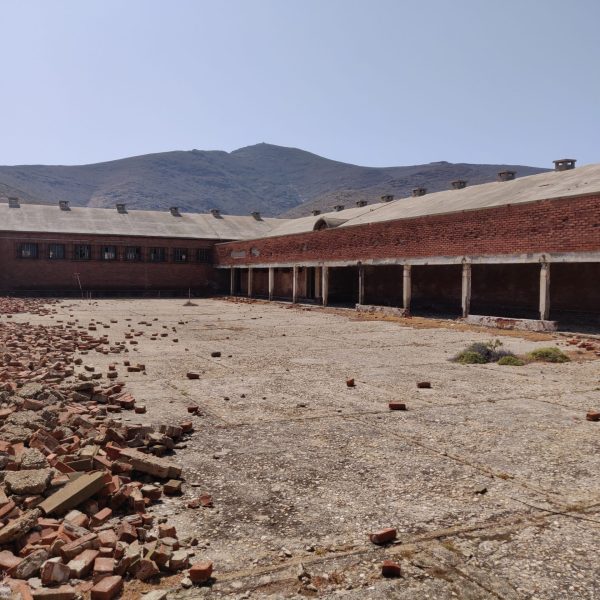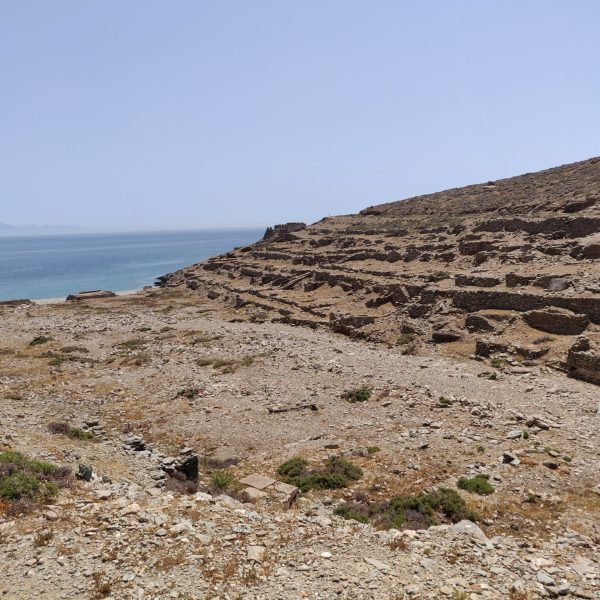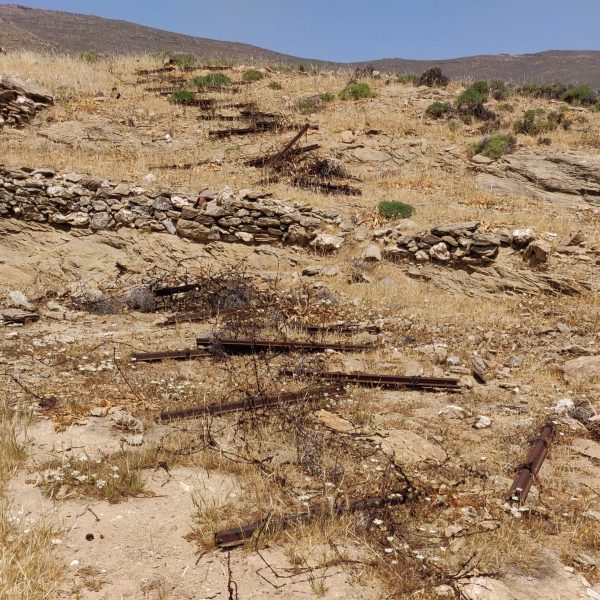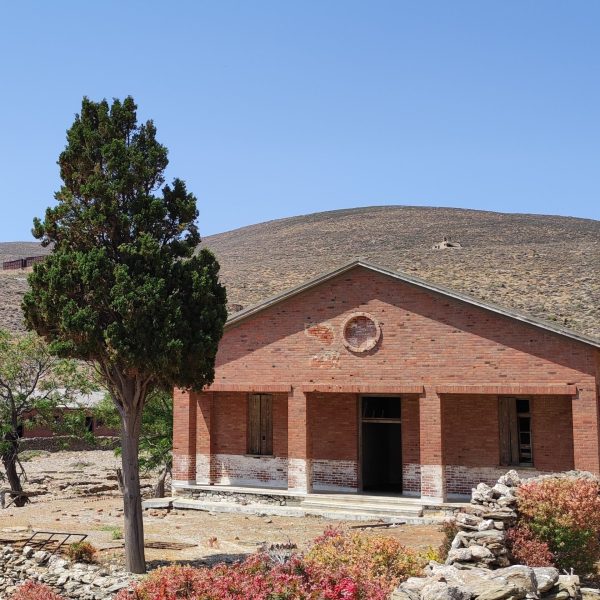The historical site
Gyaros / The historical site
Why is Gyaros a historical site?
In 2001, the Greek state designated Gyaros as a historical site as it “constitutes an important place of historical memory that has been inextricably linked to the history of modern Greece. It is a living testimony of the struggles of the Greek people for freedom and democracy, a symbol of condemnation of torture and the restriction of democratic freedoms.”
Protected as historical sites in Greece are locations that were the site of outstanding historical or mythical events, or areas that contain monuments after 1830, or complex works of man and nature after 1830, whose protection is required due to the folklore, ethnological, social, their technical, architectural, industrial or generally historical, artistic or scientific importance.
The buildings, facilities and constructions located in the five eastern bays of Gyaros were classified as historically preserved monuments because:
- As a whole, they constitute a place of memory, symbols of freedom and evidence of an era that marked the history of modern Greece.
- They are constructions completed by personal labor of the prisoners themselves under unfavorable conditions.
- They maintain, without subsequent alterations, their original structure, arrangement and character and give valuable information about the living conditions that prevailed during the period of their operation and about the historical events of their time.
- They are buildings with remarkable austere architecture, in which materials, form and construction are distinguished by sequence and consistency.
Excerpt of the Ministerial Decision declaring a historical site (Government Gazette 1680/Β/2001).
The first political prisoners arrived in Gyaros in the summer of 1947. They describe their inhumane living conditions: they live crammed into tents, exposed to the inhospitable weather and malnourished. The five bays at the east coast of Gyaros of the island were turned into open-air prisons. Each prison was fenced with barbed wire and operated almost autonomously, having the necessary auxiliary buildings (outposts, artillery, toilets, etc.)
In the same year, the construction of the prisons and the rest of the buildings begins: the power plant, the infirmary, the warehouse, the outposts and the artillery. All construction work was done by the forced labor of the prisoners themselves. They themselves did the excavating, breaking and transporting stone and building material, laying barbed wire, opening the roads.

The grueling work hours were accompanied by horrific torture and hazings by the guards. Many died from torture and hardship. For the prisoners, the construction of the prisons functioned as a plan to exterminate them and Gyaros was the “island of death”.
For the island, the dark days ended in 1974 with the fall of the dictatorship and the evacuation of the prisons. Then, for several decades, the Greek Navy used the island as a firing practice range. The preservation of the collective memory of Gyaros imposed the protection of the area and everything the thousands of political prisoners experienced. Recognising this need, the state classified the island as a historic site and designated all the buildings as historically preserved monuments.
In 2011, by Ministerial Decision, the boundaries of the historical site were redefined and limited to the southeastern bays and Glaronisi, as “with the proposed demarcation, the important area of historical memory with the existing monuments is effectively protected. » (Government Gazette 182/C.E.C-P/2011).








